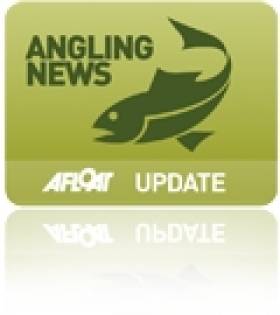Displaying items by tag: Solis Lough Eske Castle
Fishing in Blue Stacks Highlighted in New Film
#ANGLING - A new film on fishing in south Donegal will have its premiere this Thursday, the Donegal Democrat reports.
The film, The Blue Stack Mountains, is the fourth in a series on angling in Ireland by German producer Dietrich Bohnhorst, whose previous angling documentaries have been broadcast on television around the world.
According to Bohnhorst, who has lived in Donegal for 25 years, his latest film “describes a journey from Glenties, through Commeen, Stranorlar, Ballybofey and back over Barnesmore Gap to Donegal town."
It also pays special attention to “about 40 lakes which lie in the Blue Stacks, how to get there and where to fish, what flies to use and so on.”
Bohnhorst hopes his film will help to break the "invisible line" that he says has cut off the "under-promoted" Donegal from the marketing of angling in Ireland.
All are invited to the premiere at Solis Lough Eske Castle this Thursday at 8pm. Admission is free.
MGM Boats Lift Sunseeker Award in Donegal
After a very successful conference in Donegal in 2009 Sunseeker dealers from all four corners of the world voted unanimously to host the event again at Solis Lough Eske Castle this year. Over 220 people attended last weekend and this time round the conference experienced five days of glorious sunshine in the north west.
MGM Boats, the Irish Distributor for Sunseeker received a 'Bronze Award' for outstanding achievement in Service and Support throughout a very challenging 2010 Season.
'Sales might have slowed down but commitment to After Sales Service remains a core part of our business', commented Martin Salmon of the Dun Laoghaire firm. Pictured below are the four directors of MGM Boats along with Sunseeker founder Robert Braithwaite CBE.

It is the fifth time that Sunseeker have hosted their conference in Ireland in the last ten years. Sunseeker celebrated the 50th Anniversary of the incorporation of the company on the 17th November.
Established 50 years ago, Sunseeker has built a reputation as the manufacturer of the world's finest motoryachts - vessels that enjoy a unique combination of luxury and performance. Despite the Global economic crises Sunseeker have managed to maintain a workforce of 2000 employees in the UK and continue to strive in all markets.
In June of this year Dublin based Investment Firm FL Partners founded by Peter Crowley and Neill Hughes along with a number of Irish Investors bought a significant majority stake in Sunseeker.
























































